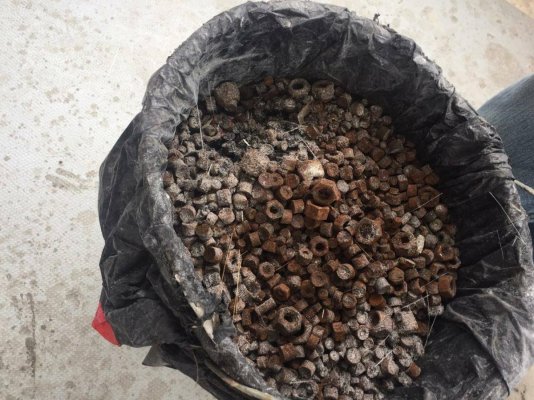LeoKa
Guru
- Joined
- Apr 15, 2017
- Messages
- 1,150
- Location
- USA
- Vessel Name
- Ironsides
- Vessel Make
- 54' Bruce Roberts steel sailboat hull, coastal LRC, 220HP CAT 3306.
My boat is a custom sailboat hull steel construction. The boat is top heavy, due to the upper structure, which is wide and high, plus has thicker steel.
The builder added an I-beam keel to the bottom and mounted about 5000 lbs ballast on it, going forward on the keel.
The boat is too tender and needs more weight at the bottom.
My first idea was to pull the boat out and weld more steel to the I-beam. This should not be a big problem, as long I have the welder and material in place, when I pull out the boat for a bottom job. However, this needs to wait due to budget restrains.
On another forum it was suggested the concrete can be poured into the bilge (permanent ballast) and left alone there forever. It also takes care of the rust in the bilge.
Anyone used this method, or hear of, to increase the ballast volume? Thanks.
The builder added an I-beam keel to the bottom and mounted about 5000 lbs ballast on it, going forward on the keel.
The boat is too tender and needs more weight at the bottom.
My first idea was to pull the boat out and weld more steel to the I-beam. This should not be a big problem, as long I have the welder and material in place, when I pull out the boat for a bottom job. However, this needs to wait due to budget restrains.
On another forum it was suggested the concrete can be poured into the bilge (permanent ballast) and left alone there forever. It also takes care of the rust in the bilge.
Anyone used this method, or hear of, to increase the ballast volume? Thanks.





